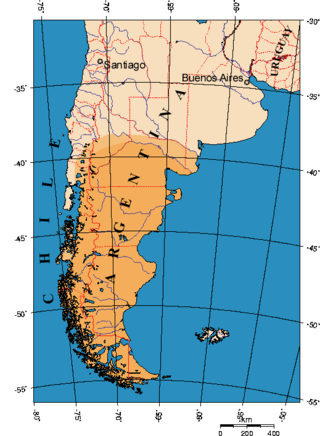
Patagonia is a geographical region that encompasses the southern end of South America, governed by Argentina and Chile. The region comprises the southern section of the Andes Mountains with lakes, fjords, temperate rainforests, and glaciers in the west and deserts, tablelands, and steppes to the east. Patagonia is bounded by the Pacific Ocean on the west, the Atlantic Ocean to the east, and many bodies of water that connect them, such as the Strait of Magellan, the Beagle Channel, and the Drake Passage to the south.

Río Negro is a province of Argentina, located in northern Patagonia. Neighboring provinces are from the south clockwise Chubut, Neuquén, Mendoza, La Pampa and Buenos Aires. To the east lies the Atlantic Ocean.

The Mapuche is a group of native indigenous inhabitants of south-central Chile and southwestern Argentina, including parts of Patagonia. The collective term refers to a wide-ranging ethnicity composed of various groups who share a common social, religious, and economic structure, as well as a common linguistic heritage as Mapudungun speakers. Their homelands once extended from Choapa Valley to the Chiloé Archipelago and later spread eastward to Puelmapu, a land comprising part of the Argentine pampa and Patagonia. Today the collective group makes up over 80% of the indigenous peoples in Chile and about 9% of the total Chilean population. The Mapuche are concentrated in the Araucanía region. Many have migrated from rural areas to the cities of Santiago and Buenos Aires for economic opportunities.

Santa Cruz Province is a province of Argentina, located in the southern part of the country, in Patagonia. It borders Chubut Province to the north, and Chile to the west and south, with an Atlantic coast on its east. Santa Cruz is the second-largest province of the country, and the least densely populated in mainland Argentina.

Neuquén is a province of Argentina, located in the west of the country, at the northern end of Patagonia. It borders Mendoza Province to the north, Rio Negro Province to the southeast, and Chile to the west. It also meets La Pampa Province at its northeast corner.
Neuquén is the capital city of the Argentine province of Neuquén and of the Confluencia Department, located in the east of the province. It occupies a strip of land west of the confluence of the Limay and Neuquén rivers which form the Río Negro, making it part of the ecoregion of Alto Valle del Río Negro. The city and surrounding area have a population of more than 340,000, making it the largest city in Patagonia. Along with the cities of Plottier and Cipolletti, it is part of the Neuquén – Plottier – Cipolletti conurbation.
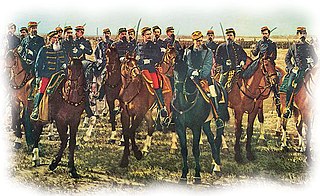
The Conquest of the Desert was an Argentine military campaign directed mainly by General Julio Argentino Roca during the 1870s and 1880s with the intention of establishing dominance over Patagonia, inhabited primarily by indigenous peoples. The Conquest of the Desert extended Argentine territories into Patagonia and ended Chilean expansion in the region.

The Tehuelche people, also called the Aónikenk, are an indigenous people from eastern Patagonia in South America. In the 18th and 19th centuries the Tehuelche were influenced by Mapuche people, and many adopted a horseriding lifestyle. Once a nomadic people, the lands of the Tehuelche were colonized in the 19th century by Argentina and Chile, gradually disrupting their traditional economies. The establishment of large sheep farming estates in Patagonia was particularly detrimental to the Tehuelche. Contact with outsiders also brought in infectious diseases ushering deadly epidemics among Tehuelche tribes. Most existing members of the group currently reside in cities and towns of Argentine Patagonia.
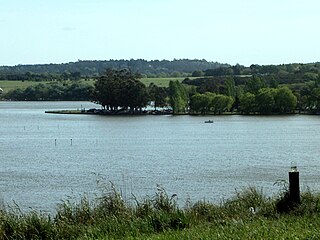
Laguna de los Padres is a small lake located about 12 miles west of the city of Mar del Plata, Argentina and roughly one mile east of Sierra de los Padres' hills. The name of the lake as well as of the hills nearby has its origins in the Jesuit Fathers (Padres) attempting to evangelize the region in the 17th century. The lake has a length of 2,065 mt and a width of 1,701 mt. Its water is shallow and the aquatic flora, like algae, rushes and another species like the myriophyllum aquaticum, commonly known in Argentina as gambarussa, overpopulates the muddy bottom. Woods of eucalyptus and pines surround the adjacent area, as well as some aboriginal shrub, like the colletia paradoxa, locally known as curro. The area also hosts the southernmost population of tala and some specimenes of sambucus. The place had been open to the public since 1946. Sport fishing is the main recreational activity, and there is a wharf for row boats in a small island linked to land by a causeway. Watercraft with internal combustion power are not permitted on the lake. Laguna de los Padres also hosted rowing competitions during the 1995 Pan American Games and 2006 South American Games.
Las Lajas is a town in Neuquén Province, Argentina, and the capital of Picunches Department. The town, at an altitude of 900 metres (3,000 ft) above mean sea level, is located on the right shore of Agrio River at the Andean foothills. National Routes 22 and 40 intersect in this area of the central Neuquén Province. The Cuchillo Curá range, considered the most important underground ecosystem in Argentina, extends approximately 10 kilometres (6.2 mi) from Las Lajas.

Llavallol is a district of Lomas de Zamora Partido in Buenos Aires Province, Argentina. It forms part of the Greater Buenos Aires urban conurbation.

The climate of Argentina varies from region to region, as the vast size of the country and wide variation in altitude make for a wide range of climate types. Summers are the warmest and wettest season in most of Argentina except in most of Patagonia where it is the driest season. Warm in the north, cool in the center and cold in the southern parts experiencing frequent frost and snow. Because southern parts of the country are moderated by the surrounding oceans, the cold is less intense and prolonged than areas at similar latitudes in the northern hemisphere. Spring and autumn are transition seasons that generally feature mild weather.
The Casamayoran age is a period of geologic time within the Early Eocene epoch of the Paleogene, used more specifically within the South American land mammal age (SALMA) classification. It follows the Itaboraian and precedes the Mustersan age.
The Colloncuran age is a period of geologic time within the Middle Miocene epoch of the Neogene, used more specifically within the SALMA classification in South America. It follows the Friasian and precedes the Laventan age.
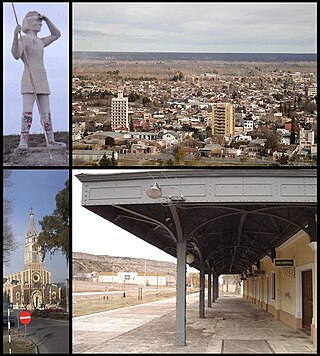
Villa Regina is a city in the General Roca Department of the province of Río Negro, Argentina. The city is connected to the rest of the towns in the Upper Río Negro Valley via National Route 22.

Neuquén Basin is a sedimentary basin covering most of Neuquén Province in Argentina. The basin originated in the Jurassic and developed through alternating continental and marine conditions well into the Tertiary. The basin bounds to the west with the Andean Volcanic Belt, to the southeast with the North Patagonian Massif and to the northeast with the San Rafael Block and to the east with the Sierra Pintada System. The basin covers an area of approximately 120,000 square kilometres (46,000 sq mi). One age of the SALMA classification, the Colloncuran, is defined in the basin, based on the Collón Curá Formation, named after the Collón Curá River, a tributary of the Limay River.

The Desert Campaign (1833–1834) was a military campaign in Argentina led by Juan Manuel de Rosas against the indigenous people of the southern Pampas and northern Patagonia. The campaign was later followed by the Conquest of the Desert, which took place in the 1870s and 1880s.
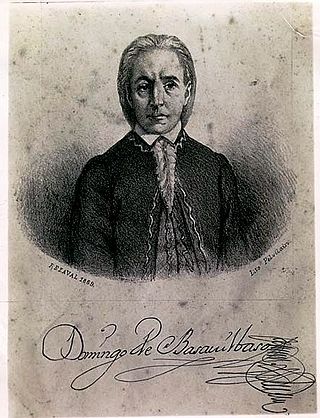
Domingo de Basavilbaso was a Spanish politician and military, who served during the colonial period of Argentina as alcalde, comandante, procurador and regidor of Buenos Aires. He was the founder of the Basavilbaso family in Buenos Aires, related from the colonial period to the beginning of the 20th century with the main Spanish, Argentine and Uruguayan patrician families.
The Argentine Patagoniawildfires begun on Sunday March 7, 2021 when a focus of fire appeared at kilometer 21 of Provincial Route 6 of Río Negro Province, Argentina. Subsequently, the fire spread to Las Golondrinas, Lago Puelo, El Hoyo, El Maitén and Cholila in Chubut Province, following the 42nd parallel south. The fire would spread aided by the wind reaching populated areas where there have been reports of burned vehicles and the destruction of hundreds of houses. Servicio Nacional del Manejo del Fuego helped people evacuate the area. Various causes have been proposed for the fire, including the fall of a trees on electrical transmission cables, given that the fires follow the electrical wiring. Intentional fires have also been proposed as a cause. National minister of Ambiente y Desarrollo Sostenible, Juan Cabandié, called for an investigation through a criminal complaint about the causes of the fire. As of March 12, 2021, 11 people were missing.
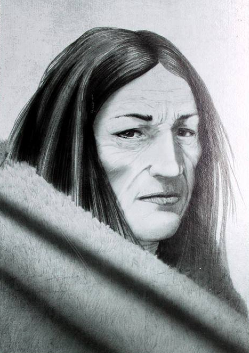
María, better known as María la Grande or María Grande, is the Christian name of a woman who served as the cacica of the southern Tehuelche people who lived in the Strait of Magellan and the Patagonian coast during the first half of the 19th century. Her direct domain was focused in the territory of the Bay of San Gregorio, in the present-day Chilean region of Magallanes, although she was called upon in other Patagonian regions when a conflictive situation required her judgment.















